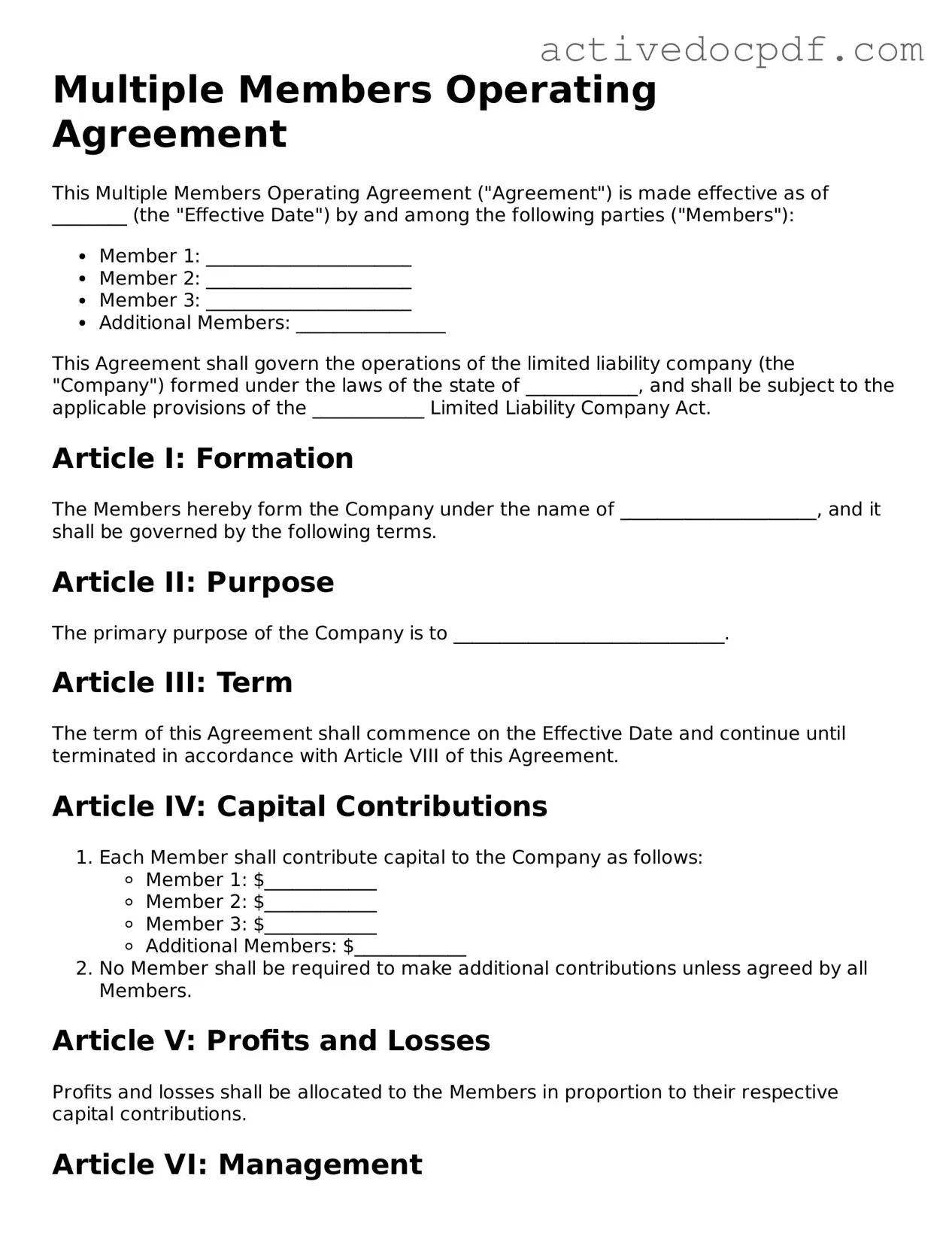What is a Multiple Members Operating Agreement?
A Multiple Members Operating Agreement is a legal document that outlines the management structure and operating procedures for a limited liability company (LLC) with multiple members. This agreement serves as a foundational framework, detailing how decisions will be made, how profits and losses will be distributed, and the roles and responsibilities of each member.
Why is an Operating Agreement important?
An Operating Agreement is crucial for several reasons:
-
It helps clarify the expectations and responsibilities of each member.
-
It can prevent conflicts by providing a clear dispute resolution process.
-
It protects the limited liability status of the LLC by demonstrating that it operates as a separate entity.
-
It is often required by banks and investors before they engage with the LLC.
Who should draft the Operating Agreement?
While any member of the LLC can draft the Operating Agreement, it is advisable to seek assistance from a legal professional. A lawyer can ensure that the document complies with state laws and adequately reflects the intentions of all members. This helps avoid potential pitfalls in the future.
What key elements should be included in the agreement?
When drafting a Multiple Members Operating Agreement, consider including the following elements:
-
Member Information:
Names and addresses of all members.
-
Management Structure:
Details on whether the LLC will be member-managed or manager-managed.
-
Voting Rights:
Explanation of how decisions will be made and the voting process.
-
Profit and Loss Distribution:
Guidelines on how profits and losses will be shared among members.
-
Dispute Resolution:
Procedures for resolving conflicts that may arise.
-
Amendments:
How the agreement can be modified in the future.
Can the Operating Agreement be amended?
Yes, the Operating Agreement can be amended. Typically, the process for making amendments is outlined within the agreement itself. Most often, it requires a majority or unanimous vote of the members, depending on what has been established in the original document.
Is it necessary to file the Operating Agreement with the state?
No, you do not need to file the Operating Agreement with the state. However, it is essential to keep it in a safe place and ensure that all members have access to it. Some states may require you to provide a copy if requested, especially if issues arise.
What happens if there is no Operating Agreement?
If an LLC does not have an Operating Agreement, the state’s default laws will govern the LLC’s operations. This can lead to unintended consequences, as the default rules may not reflect the members' intentions or the unique needs of the business.
Can a single-member LLC use this type of agreement?
A Multiple Members Operating Agreement is specifically designed for LLCs with multiple members. However, a single-member LLC can still benefit from having an Operating Agreement, even if it is a simpler version. It can help clarify the owner’s intentions and provide a clear structure for the business.
How often should the Operating Agreement be reviewed?
It is wise to review the Operating Agreement regularly, especially after significant changes in the business, such as adding new members or changing the management structure. Regular reviews help ensure that the agreement remains relevant and continues to meet the needs of the LLC.
